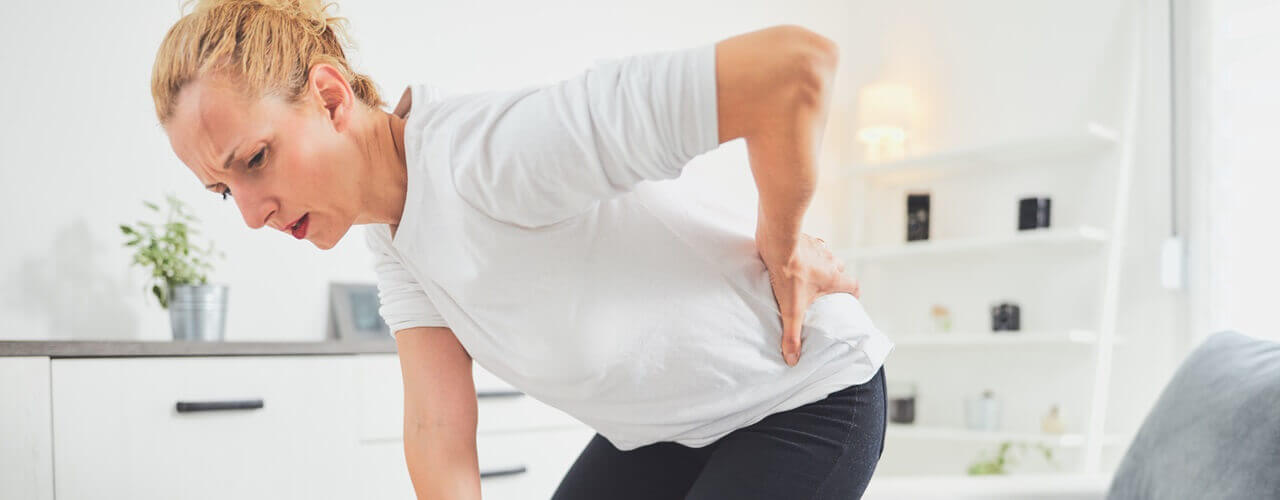Hip pain can be a debilitating condition that affects millions of individuals worldwide. Approximately 15% of adults over the age of 60 experience hip pain. If you’re one of those individuals, you understand the impact on your daily life. Fortunately, physical therapy could hold the key to understanding the causes of your hip pain and unlocking your relief and mobility.
Cracking the Case: Deciphering the Enigma of Hip Pain
Hip pain can manifest in various ways, ranging from mild discomfort to severe limitations in mobility. Understanding the symptoms and causes of hip pain is crucial for effective management and seeking prompt treatment.
Symptoms of a Hip Condition
Groin Pain
- Discomfort in the groin area is a hallmark symptom of hip pain. This pain may be dull and achy or sharp and stabbing, depending on the underlying cause.
Thigh Pain
- Pain can radiate from the hip joint down the outer thigh, sometimes extending to the knee. This pain may worsen with movement or weight-bearing activities.
Buttock Pain
- Hip pain may also manifest as discomfort in the buttock region. Patients may experience a deep ache or sharp pain in this area, particularly when sitting or standing for prolonged periods.
Limited Range of Motion
- Individuals with hip pain often experience limitations in the range of motion of the affected hip joint. Activities such as walking, climbing stairs, or bending may become challenging.
Stiffness
- Stiffness in the hip joint, specifically after periods of inactivity or upon waking in the morning. This stiffness may improve with movement but worsen with prolonged rest.
Causes of Hip Pain
Osteoarthritis
- One of the most prevalent causes of hip pain is osteoarthritis, a degenerative joint disease characterized by the breakdown of cartilage in the hip joint.
Bursitis
- When the bursae, small fluid-filled sacs cushioning the hip joint, are inflamed it can lead to hip pain. Bursitis often results from repetitive movements or prolonged pressure on the hip joint.
Muscle Strains
- Overuse or injury to the muscles surrounding the hip joint can cause strains, resulting in pain and discomfort. Activities like running, jumping, or sudden movements may contribute to muscle strains.
Hip Fractures
- Fractures of the hip, particularly in older adults, can cause severe pain and immobility. These fractures often occur due to falls or trauma and require immediate medical attention.
Labral Tears
- Tears in the acetabular labrum, the cartilage ring surrounding the hip socket, can lead to hip pain, stiffness, and instability. Labral tears may occur as a result of trauma or repetitive hip movements.
Navigating the Path to Healing: Your Guide to Effective Treatment for Hip Pain
At Walker Physical Therapy & Sports Injury Center in Menifee, our team designs personalized treatment plans tailored to your unique needs. We aim to alleviate discomfort and restore function through hands-on techniques and targeted exercises. Whether you’re recovering from surgery, managing a chronic condition, or overcoming an injury, our comprehensive approach ensures you receive the care you deserve.
Treatment Methods
Therapeutic Exercises
- Physical therapists prescribe specific exercises to strengthen the muscles surrounding the hip joint. These exercises may include stretching, range of motion, and strengthening exercises targeting the hip flexors, abductors, adductors, and gluteal muscles. Strengthening these muscles helps stabilize the hip joint and improve mobility.
Manual Therapy
- Hands-on techniques, including joint mobilization and soft tissue mobilization, are used to reduce pain, improve flexibility, and restore joint mechanics. Manual therapy techniques can help release tight muscles, break up scar tissue, and improve blood flow to the affected area, promoting healing and reducing discomfort.
Modalities
- Physical therapists may use modalities such as ultrasound or electrical stimulation to manage pain and inflammation in the hip joint. These modalities can help alleviate acute pain, reduce muscle spasms, and improve tissue healing, enhancing overall treatment outcomes.
Gait Training
- Proper gait mechanics are essential for optimal hip function and pain management. Physical therapists analyze the patient’s walking pattern and provide gait training to correct any abnormalities or compensatory movements. Gait training aims to improve balance, stability, and weight distribution, reducing stress on the hip joint during walking and other weight-bearing activities.
Functional Training
- Functional exercises mimic activities of daily living and sports-specific movements to improve overall hip function and performance. Physical therapists incorporate functional training exercises into rehabilitation programs to enhance functional capacity, coordination, and proprioception. Functional training helps patients resume their normal activities with confidence and reduced pain.
Taking Charge of Your Hip Health: Steps to a Pain-Free Future
Don’t let hip pain dictate your life any longer. With the guidance of our experienced physical therapy team, you can reclaim your mobility and rediscover the joy of pain-free movement. Call our team at Walker Physical Therapy & Sports Injury Center in Menifee to learn more about the causes of hip pain and discover if physical therapy is the right solution for you. Your journey to pain-free living starts now!
Tags: physicaltherapy, physicaltherapist, Hip Pain, Causes of hip pain, Hip pain relief

